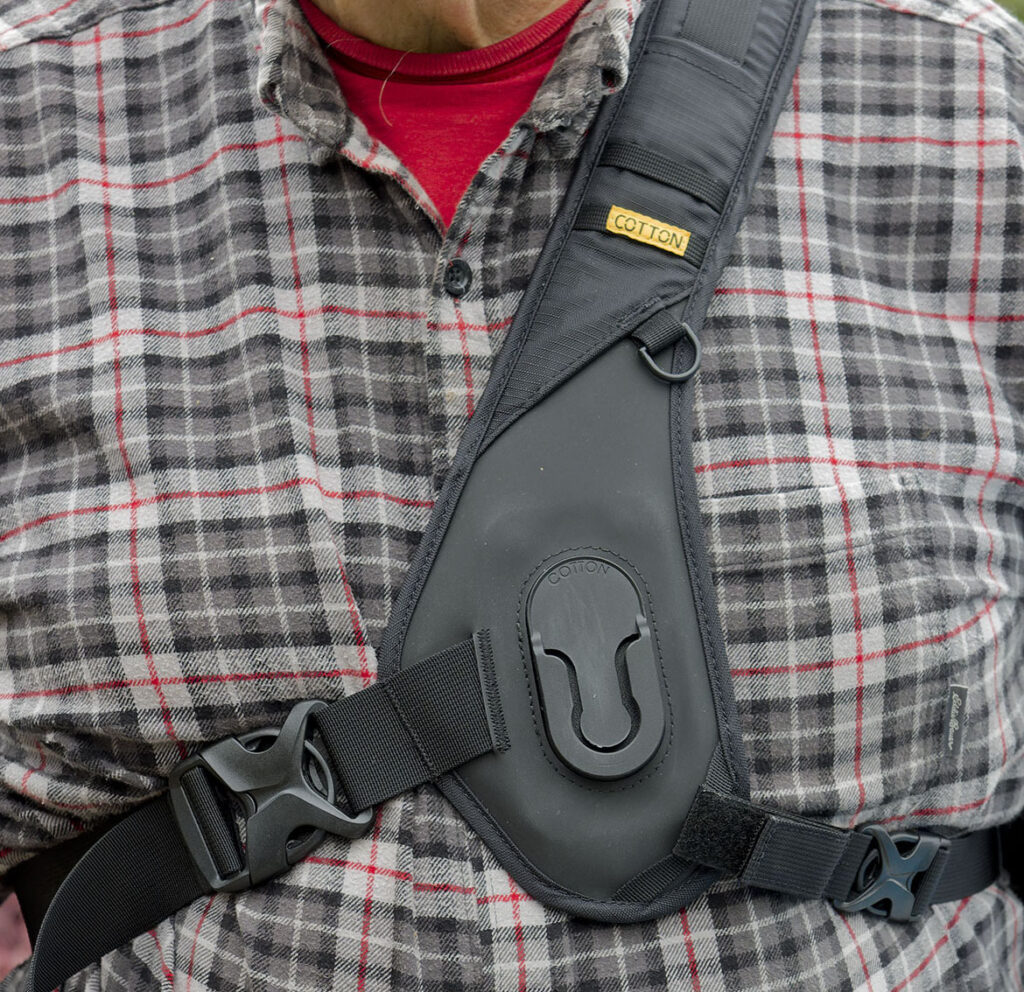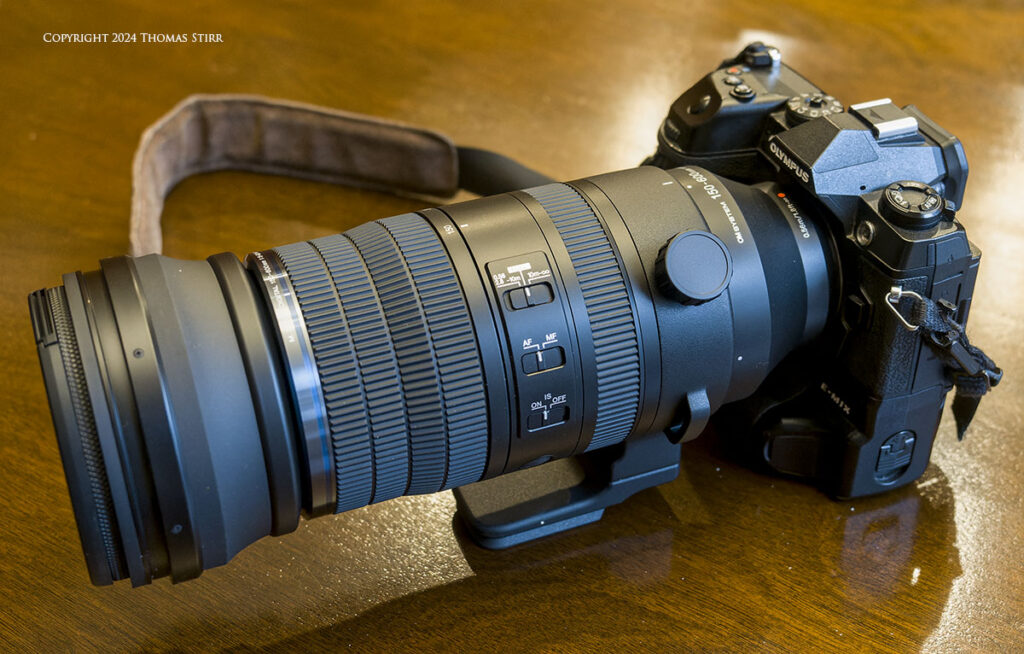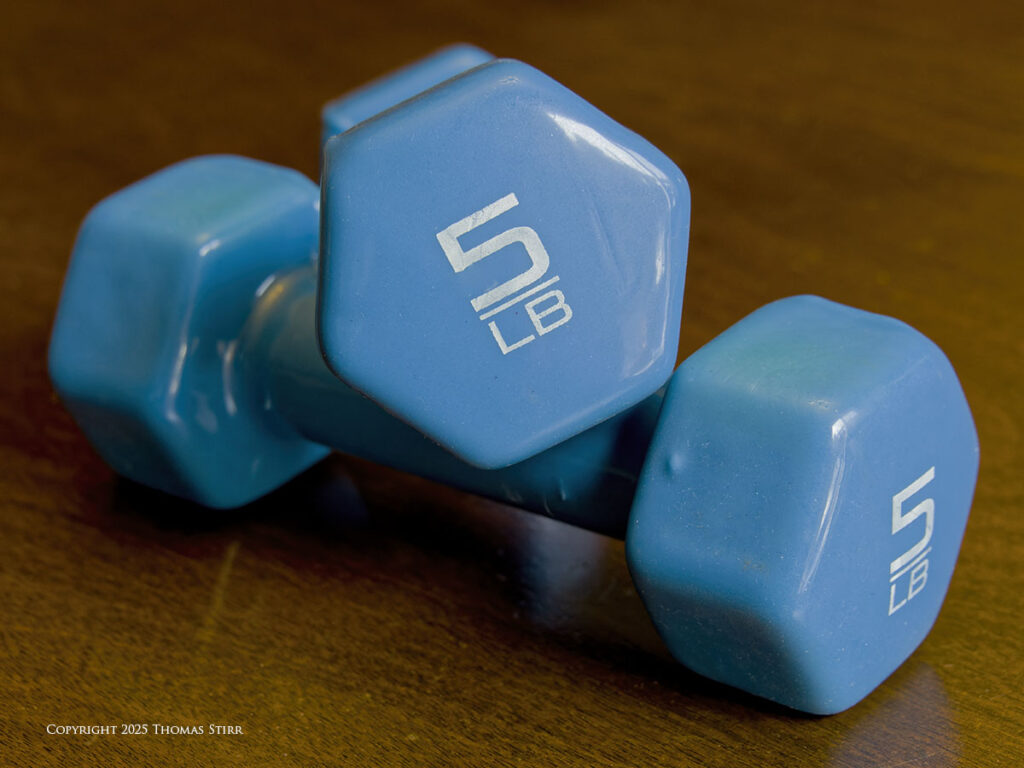This article features some basic handheld telephoto tips that can be used to help avoid arm fatigue when using larger, heavier lenses. Now that I’m in my 70s I still use the same basic technique that I’ve utilized for many years. There are a few things that I’ve added to help me shoot with the M.Zuiko 150-600 mm f/5-6.3 IS zoom lens for extended periods of time.
NOTE: Click on images to enlarge. If you would like to view this article in a range of other languages, click on the Canadian flag in the upper right corner.

Regardless of the camera gear that we happen to own, many of us face situations when shooting a long, heavy telephoto lens at a slow shutter speed is beneficial.

When using a long, heavy telephoto lens to photograph dragonflies and other insects in flight, I always use a short stool. This allows me to get down closer to the action, and place my elbows on my thighs for extra support when needed.


To help avoid human-generated lens shake it is helpful to choose an appropriate shutter speed for the focal length being used and our individual skill level.

Using a smooth shutter release motion, rather than a harsh stabbing one, can help reduce lens shake and create sharper images.

Practicing relaxed, controlled breathing is also important. This helps avoid our chests heaving and potentially creating lens shake.

If we are using a long, heavy telephoto lens from a standing position it is advisable to use an angled stance pointed towards your target. When panning with a bird rotate smoothly from your waist as this helps keep your lens level.

To properly support the weight of your camera and telephoto lens form a support triangle by keeping your elbows tucked in to your sides and your camera body pressed firmly against your brow.

When using lenses that are not overly heavy a standard elbow position should be adequate to support its weight.

When shooting with large, heavy telephoto lenses like the M.Zuiko 150-600 mm f/5-6.3 IS, it is critical to adjust your elbow position. Bringing your left elbow to the right and planting it firmly at the bottom of your rib cage will help create more support for the lens.
If you are holding in a handheld position for several minutes with the same subject bird, adjust the angle of your left arm by moving your hand along the lens barrel. Shortening the distance from your hand to your camera body will help create additional support.
Make sure to maintain good, upright posture as it helps to use more of your back strength to support the lens.

Use a comfortable camera harness to support your camera and lens when you are not actively shooting. I happen to like the Cotton Carrier Hyker Slingbag when I need to carry additional items with me.
I also use the Cotton Carrier G3 Harness for 2 Cameras. I find both of these camera supports very comfortable and easy to use. There may be other camera supports that are better suited to your needs.
The key point is to use some kind of camera support when there are lulls in the shooting action, as they provide some much needed rest for your arms.
It has only been the last couple of years that I started using these camera supports… and they have made a significant difference in helping tp reduce arm fatigue during my senior years.
As we age we can lose muscle mass and strength. Don’t pay any attention to the hype about supplements. When it comes to muscle mass and strength the old adage of ‘use it or lose it’ proves to be true. The more we get out and use our large, heavy camera gear, the more strength we’ll build in our arms and upper body. We can also incorporate some mild weight training into our everyday routine. Even doing some push-ups every day can help build up some strength to handle larger, heavier telephoto lenses.

The final tip is to find a comfortable and supportive camera body to use with larger, heavier telephoto lenses when shooting handheld. I’m fortunate that I was already shooting with a pair of E-M1X bodies. These bodies make a noticeable difference in the level of support, ergonomics and comfort they deliver when out in the field for extended periods.
If you’re feeling some arm fatigue you may find that adding a grip to your existing camera may be beneficial.
Technical Note
Photographs were captured handheld using camera gear as noted in the EXIF data. All images were created from RAW files using my standard process in post. This is the 1,476 article published on this website since its original inception in 2015.
How you can keep this website advertising free
My intent is to keep this photography blog advertising free. If you enjoyed this article and/or my website and would like to support my work, you can purchase an eBook, or make a donation through PayPal (see Donate box below). Both are most appreciated. Sometimes all we need as photographers is a bit of inspiration. We hope you can find some of that inside Finding Visual Expression II.
Finding Visual Expression II is available for download for an investment of $11.99 CDN. The best viewing experience of this eBook will be at 100% using Adobe Acrobat Reader.
You may be interested in all of the 30 concepts covered in both of these related eBooks. If so, you may want to also consider Finding Visual Expression.
Finding Visual Expression is available for download for an investment of $11.99 Cdn. The best viewing experience of this eBook will be at 100% using Adobe Acrobat Reader.
Our other eBooks include Images of Ireland, New Zealand Tip-to-Tip, Nikon 1: The Little Camera That Could, Desert & Mountain Memories, Images of Greece, Nova Scotia Photography Tour, and a business leadership parable… Balancing Eggs.
If you click on the Donate button below you will find that there are three donation options: $7.50, $10.00 and $20.00. All are in Canadian funds. Plus, you can choose a different amount if you want. You can also increase your donation amount to help offset our costs associated with accepting your donation through PayPal. An ongoing, monthly contribution to support our work can also be done through the PayPal Donate button below.
You can make your donation through your PayPal account, or by using a number of credit card options.
Word of mouth is the best form of endorsement. If you like our website please let your friends and associates know about our work. Linking to this site or to specific articles is allowed with proper acknowledgement. Reproducing articles, or any of the images contained in them, on another website or in any social media posting is a Copyright infringement.
Article is Copyright 2025 Thomas Stirr. Images are Copyright 2014-2025 Thomas Stirr. All rights reserved. No use, duplication or adaptation of any kind is allowed without written consent. If you see this article reproduced anywhere else it is an unauthorized and illegal use. Posting comments on offending websites and calling out individuals who steal intellectual property is always appreciated!






Hi Tom,
Could you elaborate a bit for a naive weightlifter precisely what you mean by “I use 5 lb. weights and do 200 reps a day with each arm.”
Thanks,
Bill
Hi Bill,
I’m a novice as well. A rep is a repetition of an individual exercise one time. So 200 reps would be doing the same exercise 200 times. I’m not trying to bulk up with weights, but simply get more muscle tone and some additional strength. I do the same exercise (example a curl) 200 times with each arm which totals 1,000 lbs of weight lifted with each arm.
Tom